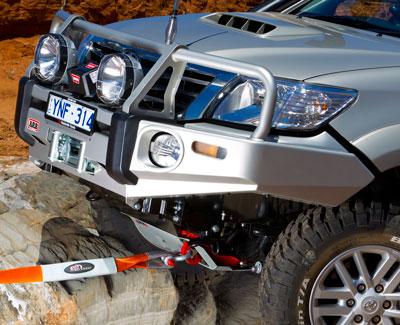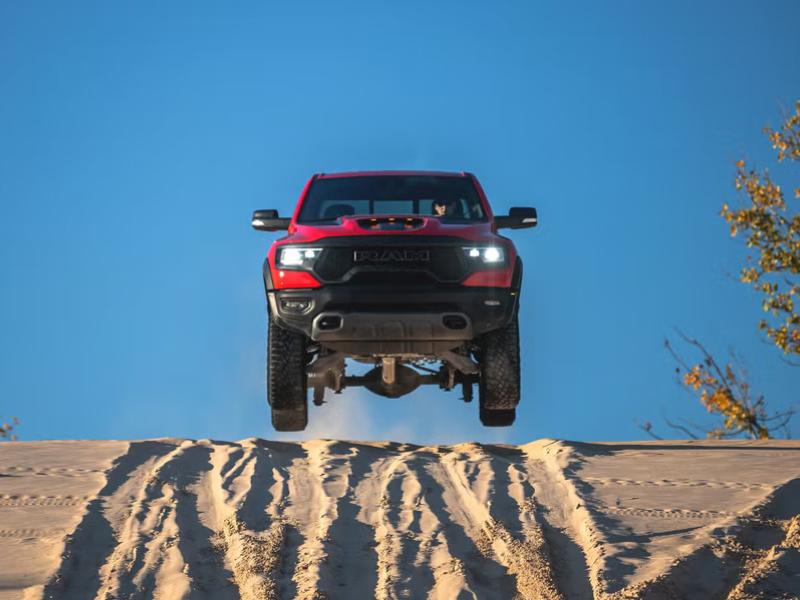It’s amazing what you can forget sometimes. A friend of mine, out driving a 70-Series Land Cruiser ute on his local beach, forgot he was in low range, forgot his tyres were still at normal pressure – and got stuck.
He had only been out to check on the local mussel beds, and got there without any trouble. But when he got back into the vehicle, he floored the accelerator, and the 4WD promptly buried itself!
And no, he hadn’t taken any recovery equipment, or even a spade. Fortunately he did have the presence of mind to deflate all the tyres, and the big brute (the ute, not my friend) drove out with ease.
In the words of the eternal bard, “more ass than class!”
What it does prove is that you can’t be too careful, and if you’re going off-road – even along the beach – it pays to have at least the bare essentials of recovery equipment with you.
So what would we consider the bare essentials? In our case, for beach driving, a spade and our Maxtrax recovery tracks. The spade is for digging sand away from the wheels so you get a better chance to drive out, while the Maxtrax make life even easier – just wedge them under the wheels and drive out. They work nearly as well in mud, too.
A new option on the market, which works in the same was as the Maxtrax, are Treds, marketed by 4WDbits. Have a look, and you choose.
But what about other off-roading – mud, rocks, rivers, the sort of stuff where you get stuck and can’t easily dig your way out?
We always recommend that people shouldn’t do any serious off-roading alone. Buddies are better, and it makes recovery situations that much easier – and safer.
If you have a winch, it is possible to rescue yourself, provided you’re got something to attach the winch rope to. Trees aren’t also available, so it’s wise to carry a good winch anchor. We usually use a Lan-cor, made in the South Island, as these are light, easy to operate, and don’t take up nearly as much room as the larger “plough” types.
However, things get much easier if you have another vehicle which can give you a tow out of your predicament, whether it be a straight slow pull, or in extremes, a frantic snatch recovery.
Of course, none of these is possible unless there’s a connection between the stuck vehicle and the mobile one, so that’s where chains, ropes, shackles and straps come in. Always have a selection in your vehicle when you’re off-roading. Have a look at what our suppliers on the following pages have to offer in terms of readymade kits, or pop along to one of their shops for some good advice.
Here’s what you should be looking for.
Firstly, a simple snatch strap and rated “D” or “bow” shackles to attach it with. A snatch strap goes under several names such as the generic “snatch strap”, kinetic rope, magic rubber band and similar.
All mean a rope or strap that stretches when load is applied to it and contracts when load is removed from it. These are most useful in sticky surfaces such as mud and sand where they stretch, move the stuck vehicle then spring it out with minimal stress or incident.
The shackles are used to attach the loops at either end of the strap to a part or parts of the vehicles (on rated recovery points ONLY!). These straps are never to be used for towing or lugging loads around, as doing so will destroy them very quickly. And if you use them in mud or sand, wash them as soon as is possible or else you will soon have two short straps.
Before you attempt a snatch recovery, it’s best to get someone – possibly a member of a 4WD club – to show you how to do it. It can be a very dangerous procedure if you’re not careful, and has to be done properly. Make sure the recovery point is strong enough that it won’t tear away from the vehicle, and NEVER use a towball, as this will almost certainly part company and become a cannonball!
Next, some kind of rope or chain rated to tow a fully-loaded vehicle. These are very different to the snatch straps as they have no stretch at all. They are not used to spring anything out of anywhere, they are simply for pulling things around or as a solid extension to another recovery device.
Be very careful when using these as applying any heavy shock loads can damage them, and when these things break, things get broken in a violent manner. But their uses are as varied as you can dream up. Just as useful as a snatch strap, and completes a recovery bag.
Make very sure that all straps, ropes, chains and shackles are “rated”. This simply means they have a measured loading at which they will hold, but not break. Unrated items could break at unexpected times, usually well before it is expected, and often with disastrous results.
And, of course, a good jack. Any old jack is better than no jack, but the best one you can own for any kind of off-road adventures is the a high lift type. This is essentially a mechanical jack that has a 900mm-1,000mm operating range, and will lift more than 3 tons.
They are strong, powerful, heavy, and potentially dangerous. But they, too, are indispensable when you need to lift yourself out of a jam. They can also be used as a hand winch.
Chains, tyre chains. You might be thinking "These are good for snow, but why are they mentioned here?". Well, it because they are great for snow and ice. But mud can also conquered with tyre chains. They essentially make any tyre they are attached to “ultra aggressive”,’ and give you more grip.
With good judgement, they will prevent you from getting stuck somewhere you might easily be caught with just rubber alone. Invaluable if you have them.
There are two main types of winches – mechanical and powered. Of the latter, electric winches are more common than those driven off the engine (pto), which in turn are more common than hydraulic winches, the latter mainly being reserved for extreme use such as competition, as they are quite expensive.
Mechanical winches are most often known as hand winches, “powered” by a long lever and a person. A lot of effort, but almost indestructible. If you carry any winch, you should have a hand winch as a backup.
The most common brand is Tirfor, and they come in various weight ratings. Be warned, the ratings on these items (as the shackles are rated too) is for a dead vertical lift. They will pull much greater weights around, but can only withstand the weight rated on the side before they might fail. Most common are winches in the 1,600-2,500kg/3,500-5,500lb scale.
Electrical, mechanical-pto and hydraulic winches are a lot faster that hand winches, and a lot easier on the operator. They are also extremely expensive compared to the combined cost of every item above. They are used to get you moving quickly and that’s about it.
Of course you can buy one of these, and if you can genuinely afford to I suggest that you do. But they are not a necessity unless you are serious about your four-wheel-driving.
The electrical winches are most common, and ask around before spending your money. Be warned that you will need bumper modifications and some wiring work to make these things operate.
Never forget your recovery gear!
News and General
Tuesday, 16 April 2013







